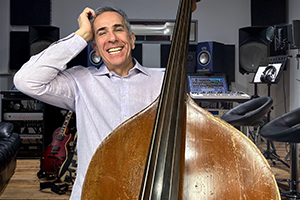Warning: This is an advanced concept, which could get you into trouble if you’re not careful
By Jon Liebman
December 19, 2024
As a bass player, a big part of your job is to outline the harmony of whatever piece you’re playing. Generally that includes playing the root of the chord on the downbeat of the bar where that chord is first introduced.
In fact, that “rule” has probably been drilled into you ever since you first set out to learn the instrument.
But just how flexible is that rule? What if you didn’t always play the root on the downbeat?
Would the music totally fall apart?
Would the rest of the band members totally freak out?
Would the audience get up and leave?
Not if you do it right.
This is an advanced concept, mostly associated with jazz, but it can be applied to other styles as well. It requires a good understanding of music theory and excellent listening skills.
It can also get you into trouble if you’re not careful, so if you try it, make sure you proceed with caution.
Take a look at this week’s video, where I share some insights on the subject, including a couple references to conversations I’ve had about it with Ron Carter and John Clayton.
Leave a comment below with your thoughts. I’m interested in your views.
Let’s play bass!
Jon


Jon ho-ho-ho! And please stay out of the rain dear! I totally dig jazz cats that play lines not necessarily starting on the root. All those cats you mentioned got it down. But for me it’s not anything I’ll be doing anytime soon. I’d say I’m intermediate (whatever that means) and play with a bunch of old dudes (like me!) and we do blues and funk mainly. I practice maybe +/- hour/day. So I focus on the tune and starting on the root.
I keep my lines simple and lock in nicely with our drummer. Man I have fun when we play out. Plus people bob their heads, tap their feet and are fairly generous with accolades and tips.
That sounds like a blast, Tim! Keep doing what you’re doing. I’ve never heard a bass player getting fired for playing too many roots. 🙂
I agree with you as a bass player we can play lead in tones and anticipation tones as well even lower and upper neighboring tones even grace notes a great example of this type of thing is Ray Brown’s bassline on sister Sadie Horace Silver if I am right.
Thanks, Maikeru. Ray Brown is a great choice for a mentor!
I think there are definitely cases where a note other than the root can be played on the downbeat, but I think it completely depends on the context in which it’s done whether it works or not. It could be nasty too. For a good example, the main riff of Cactus’ One Way or Another (not the Blondie song!), immediately comes to mind. Both bass and guitar play the minor third on the downbeat F/D. However, it’s really a grace note that quickly resolves to the root a sixteenth later and stays there for more than a beat. What’s even cooler is the riff returns to the third an octave lower even harder immediately after. Both those F’s (minor thirds) are the stronger notes, in my opinion, but the hang on the root resolution in between establishes the chord and pulls it together.
https://youtu.be/vS6gT_ToOSU?feature=shared
Thanks, Pete. Like I said, it depends on the circumstances. And you nailed it, brother! (Is it really you? 🙂 )